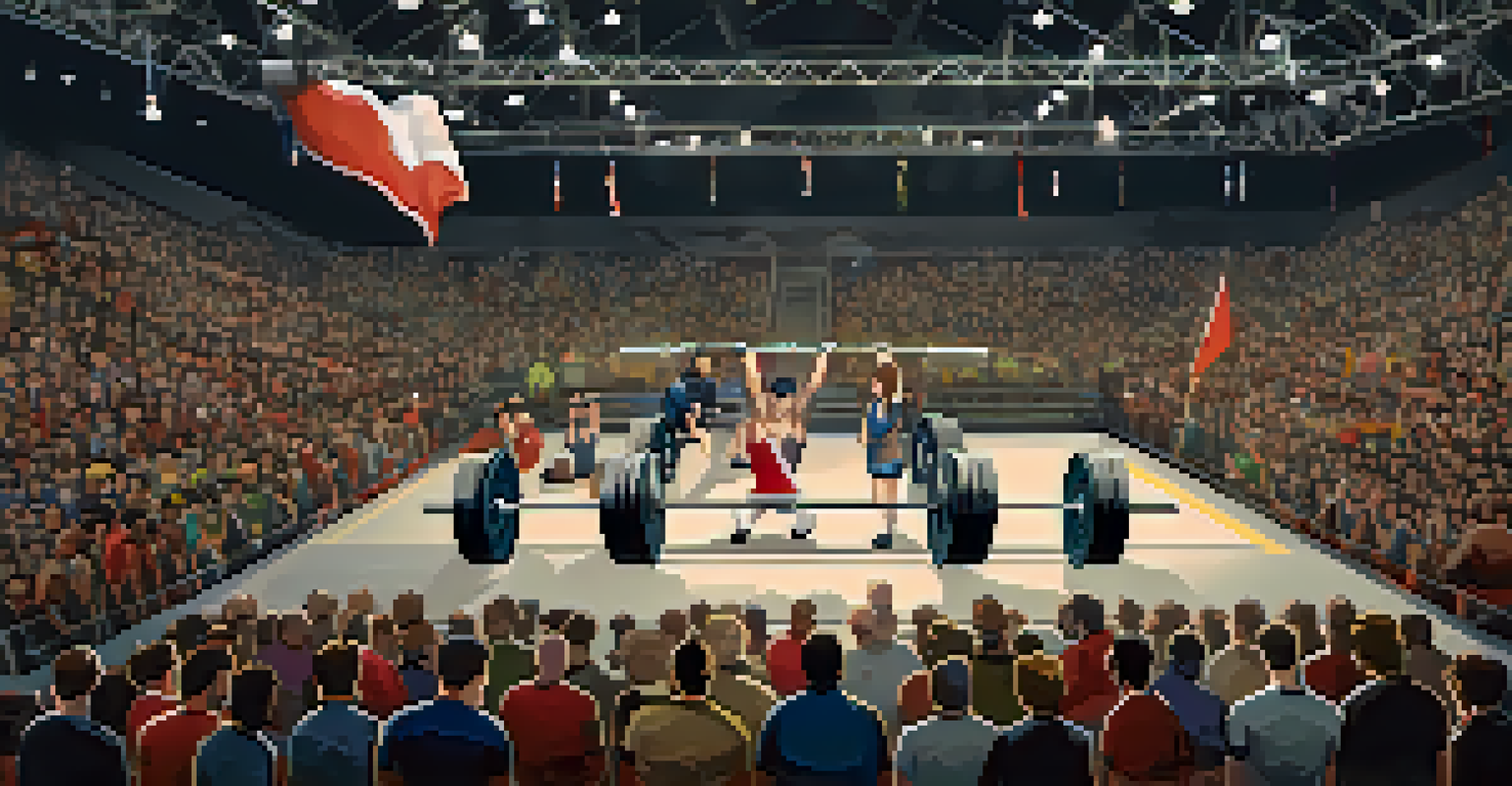Adapting Powerlifting Programs for Seasonal Competition Schedules

Understanding the Seasonal Competition Calendar
To effectively adapt your powerlifting program, it's crucial to understand the seasonal competition calendar. Many powerlifting federations host events at specific times of the year, often aligning with training cycles. This means that knowing when competitions are scheduled helps in planning your training phases, from the off-season to peak performance.
Success is where preparation and opportunity meet.
By mapping out the competition calendar, you can identify key events that align with your goals. This foresight allows you to structure your training program to ensure that you are prepared when it counts. Just like a gardener plans for seasons of growth, a powerlifter must plan for their peak performance.
For example, if you have a competition in the spring, you might focus on building strength over the winter months, tapering off as the event approaches. This strategic planning sets a solid foundation for success in your powerlifting journey.
Phased Training Approach: Building Blocks of Success
A phased training approach is essential when adapting your powerlifting program for seasonal competitions. This method involves breaking your training year into distinct phases, such as off-season, pre-competition, and competition phases. Each phase has specific goals, which helps maintain clarity and focus in your training.

For instance, during the off-season, your focus might be on building muscle and strength using higher volume and lower intensity. As you transition into pre-competition, you'll shift to lower volume but higher intensity lifts to prepare your body for the demands of competition. This gradual progression helps prevent burnout and injuries.
Plan Around Competition Dates
Understanding the seasonal competition calendar allows powerlifters to strategically structure their training for optimal performance.
Think of it like a relay race: each phase is a different leg of the race, requiring unique training strategies to pass the baton effectively. By optimizing each phase, you ensure you’re not just ready for competition, but also continuing to improve your overall powerlifting capabilities.
Adjusting Volume and Intensity for Peak Performance
As you approach competition, adjusting your training volume and intensity is critical. In the weeks leading up to an event, you'll want to decrease the volume of your workouts while increasing the intensity. This adjustment allows your body to recover while still maintaining strength levels, ensuring you peak at the right time.
The only way to do great work is to love what you do.
Imagine a bow and arrow; if you draw back too far for too long, the tension can cause a loss in power. Likewise, if you don’t reduce your training load before competition, you risk fatigue, which can hinder your performance. Carefully balancing these elements is key to hitting your best lifts when it matters most.
For example, if you're typically lifting heavy for multiple sets, consider reducing the number of sets while maintaining heavy weights as competition nears. This strategy keeps your muscles engaged without overtaxing them just before the big day.
Incorporating Recovery and Deload Weeks
In any powerlifting program, recovery is just as important as training itself, especially when preparing for seasonal competitions. Incorporating recovery and deload weeks into your training cycle helps your body adapt and rebuild, which is essential for optimal performance. These periods allow your muscles to heal and grow stronger.
A deload week typically involves reducing the weight or volume of your lifts, giving your body a chance to recuperate without completely stopping training. Think of it as a necessary pit stop during a long road trip; it allows for refueling and checking the vehicle's performance before hitting the road again.
Balance Training Phases Effectively
Utilizing a phased training approach helps maintain focus and prevents burnout by aligning training intensity and volume with competition timing.
For example, if you’ve been training hard for several weeks, scheduling a deload week before your competition can enhance your lifting capacity. You’ll return to training feeling refreshed and ready to smash your personal records.
Nutrition Strategies for Seasonal Competitions
Nutrition plays a pivotal role in powerlifting, especially as you gear up for seasonal competitions. A well-rounded diet fuels your workouts and aids in recovery, ensuring you’re in peak condition come competition day. Focusing on nutrient-dense foods helps maintain energy levels and supports muscle growth.
In the weeks leading up to the competition, consider adjusting your nutrition plan to optimize performance. This might involve increasing your protein intake for muscle repair or adjusting your carbohydrate levels to ensure you have enough energy for intense training sessions.
Think of your body as a high-performance engine; the right fuel can make all the difference. By carefully planning your meals around your training schedule, you’ll maximize your strength and endurance, setting yourself up for success on the competition platform.
Mental Preparation: The Key to Competition Success
Mental preparation is an often-overlooked aspect of powerlifting, yet it can significantly impact your performance in competitions. As the event approaches, focusing on your mental game can help build confidence and reduce anxiety. Visualization techniques, such as imagining successful lifts, can set a positive tone for your competition.
Just like athletes practice their physical skills, mental rehearsals can enhance your readiness. Consider creating a pre-competition routine that includes visualization, affirmations, or mindfulness exercises to clear your mind and focus on your goals.
Prioritize Recovery for Success
Incorporating recovery and deload weeks into your training cycle is essential for muscle healing and overall performance enhancement.
For instance, take time to mentally walk through your lifts, envisioning each step from setup to completion. This mental practice can help solidify your confidence, making you feel more prepared and ready to tackle any challenges on competition day.
Adapting Post-Competition Plans for Continued Progress
After the excitement of competition, it’s essential to adapt your training plan for continued progress. Post-competition is a great time to reflect on your performance and identify areas for improvement. This self-assessment can guide your training decisions as you move forward.
Consider taking a short break after competition to allow your body and mind to recover from the demands of the event. This doesn’t mean stopping training altogether; instead, focus on lighter workouts that promote recovery and enjoyment. It’s like hitting the refresh button, giving you renewed energy and motivation.

As you ease back into training, re-evaluate your goals and create a plan that addresses any weaknesses identified during the competition. This proactive approach ensures that each training cycle builds on your past experiences, leading to even greater achievements in future competitions.